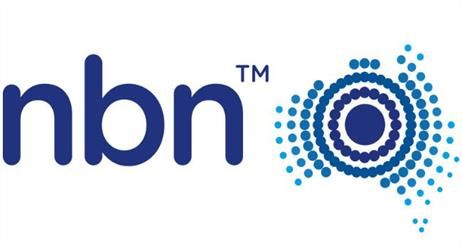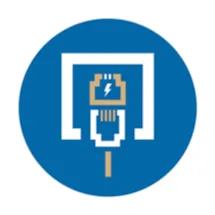NBN Cabling Guide Part 1
The NBN, otherwise called the National Broadband Network, is currently ‘rolling out’ across Australia and is expected to be completed in 2020. The NBN refers to the fixed line, fixed wireless and satellite infrastructure that is being introduced nationwide to replace the broadband infrastructure that is currently in place. This new system is expected to be faster and more reliable than the current broadband arrangement, with various cabling options available depending on your area.

Because we understand that cabling isn’t exactly the most exciting topic to research, we thought we would put together a little bit of information regarding the NBN cabling types, different cabling requirements for different homes and a few frequently asked questions. If you have any questions or need some assistance with NBN cabling for your home, give 1st Call Electrical a call at 1300 016 671 now!
NBN Fixed Line Cabling Types
If you live in a residential or commercial area, it is likely that your suburb will be fitted with one or more of the following cabling types.
Fibre to the Premises (FTTP)
FTTP cabling means a fibre cable connects the NBN network directly to your home or workplace. FTTP connections require an NBN access network device to be installed inside your home or office and need the power to operate.
Fibre to the Node (FTTN)
FTTN cabling means a fibre cable connects the NBN network to a node nearby, and then copper wiring is used for the rest of the distance between the node and your home or office. The fibre node usually looks like a street cabinet, with each street cabinet allowing the NBN access network signal to travel over a fibre optic line from the exchange to the cabinet, and connect with the copper wiring to reach your house or workplace.
Fibre to the Building (FTTB)
FTTB cabling means a fibre cable connects the NBN network to your building, and then copper wiring is used for the rest of the distance to your apartment. The fibre node is likely to look like a secure cabinet in your building’s communications room, and each cabinet will allow the NBN access network signal to travel over a fibre optic line, to the existing network technology present in the building.
Fibre to the Curb (FTTC)
FTTC cabling means a fibre cable runs to a curb near your home or office, then copper wiring is used for the rest of the distance between the curb and your house or workplace. An NBN FTTC connection is used where fibre is extended close to your house or workplace, connecting to a small Distribution Point Unit (DPU) which is usually found in a pit on the street. From here, the existing copper network is connected to the fibre to form the final NBN connection to your home or office. To power your FTTC service and provide your connection to the NBN network, an FTTC NBN connection box will be required inside your premises.
Hybrid Fibre Coaxial (HFC)
Otherwise known as ‘NBN Cable’, a fibre cable connects the NBN network to a node nearby, and then existing TV wires (or ‘coaxial cables’) connect your home or office to the NBN. HFC connections require an NBN access network device to be installed where the TV line enters your home or workplace.
Other NBN Cabling Types
If you live in a rural or remote area, it is likely that your property will be connected to the NBN in one of the following ways.
Fixed Wireless
A fixed wireless system is exactly that - a fibre cable connects the NBN network to a transmission tower, and then a rooftop antenna connects your home or office to the NBN. This option is typically used in circumstances where the distance between homes or offices can be many kilometres. Data travels from a transmission tower located as far away as 14 kilometres to an NBN outdoor antenna that has been fitted to your workplace or house.
Using a Satellite connection for the NBN
NBN is delivered to some areas via two satellites. A satellite dish is placed on the roof of your home or business, as well as an NBN-supplied modem which is installed at the point where the cable from the satellite dish enters the premises. This is mostly used for remote islands such as Norfolk Island, Christmas Island, Lord Howe Island and the Cocos (Keeling) Islands, but can also be used for mainland Australia and Tasmania as well.

NBN for Properties
Different properties, owners and tenants have different requirements and options when it comes to the NBN and cabling, so it is important to be aware of your responsibilities now and into the future.

Current Homeowners
If you are a current homeowner, ensure you keep up-to-date with all the locations that are currently being rolled out. A lot of areas are already ready for installation, but there are plenty of areas that are still awaiting services. Check out NBN Co for more information.
New properties or properties under construction
If you are building a new home, or have just completed construction and are moving in, you need to ask your developer or builder if they have applied to connect to the NBN access network. They will be able to provide further information regarding this.
NBN for Renters and Landlords
As connecting to the NBN may require the installation of NBN-supplied equipment in a home by a qualified technician, a renter will be required to speak to their landlord and receive approval before any work starts. If you don’t speak with your landlord directly, you will need to contact your property manager or real estate agent.
It is suggested that you contact the tenant services or union in your region for further information, as rules and regulations can change depending on location.
Outbuildings and Granny Flats
If you are living in an outbuilding or a granny flat that shares the same address as the primary residence on a block of land, you can not apply for a new NBN network connection. This is because every connection must have a unique address and, as the primary building has used the address already, you may not utilise it again.
In order to connect to the NBN, an extension of the existing connection in the primary residence is needed - whether that is by extending the signal of your local Wi-Fi network or by installing an additional service through a registered cabler.
NBN questions to consider
Is my area ready for NBN installation?
Check on the NBN Co website to see if your area is ready for NBN installation. Remember, you have 18 months to change over to the NBN, or your telephone and internet service will be permanently cancelled.
Why are there different NBN cabling types?
Different connection options are used to overcome the cost of providing FTTP to every home in Australia. The mixed-technology approach has meant a faster rollout utilising existing network infrastructure.
Which NBN cabling type is the best?
When compared to ADSL, all options should provide a faster service. When looking at the overall picture, however, FTTP generally provides the fastest service, followed by FTTC then FTTN. And even though FTTC and FTTP are much faster than FTTN, costs to the consumer for FTTP and FTTN are relatively similar.
What about in-home cabling?
In-home cabling is a super important component to ensure your NBN service is working like it should, at the speeds that it is capable of. Check out NBN Cabling Guide - Part 2 for further information.

Your local and reliable NBN cablers in Melbourne
If you have any questions regarding NBN cabling or the requirements for your Melbourne home or business, give 1st Call Electrical Services a call on 1300 016 671 or complete an online NBN cabling enquiry form today.
Resources :
NBN Co (How to Connect): https://www.nbnco.com.au/residential/how-to-connect
NBN Co (Preparing to Connect): https://www.nbnco.com.au/residential/how-to-connect/preparing-for-the-nbn
NBN Co (New Property Developments): https://www.nbnco.com.au/residential/how-to-connect/preparing-for-the-nbn/new-property-developments
NBN Co (Cabling): https://www.nbnco.com.au/develop-or-plan-with-the-nbn/new-developments/design-build-install/cabling
NBN (Network Technology): https://www.nbnco.com.au/residential/learn/network-technology
Australian Standards AS/CA S009 2013: http://www.acma.gov.au/theACMA/customer-cabling-rules-and-requirements
Choice - Home Cabling for the NBN: https://www.choice.com.au/electronics-and-technology/internet/connecting-to-the-internet/articles/home-cabling-for-the-nbn
